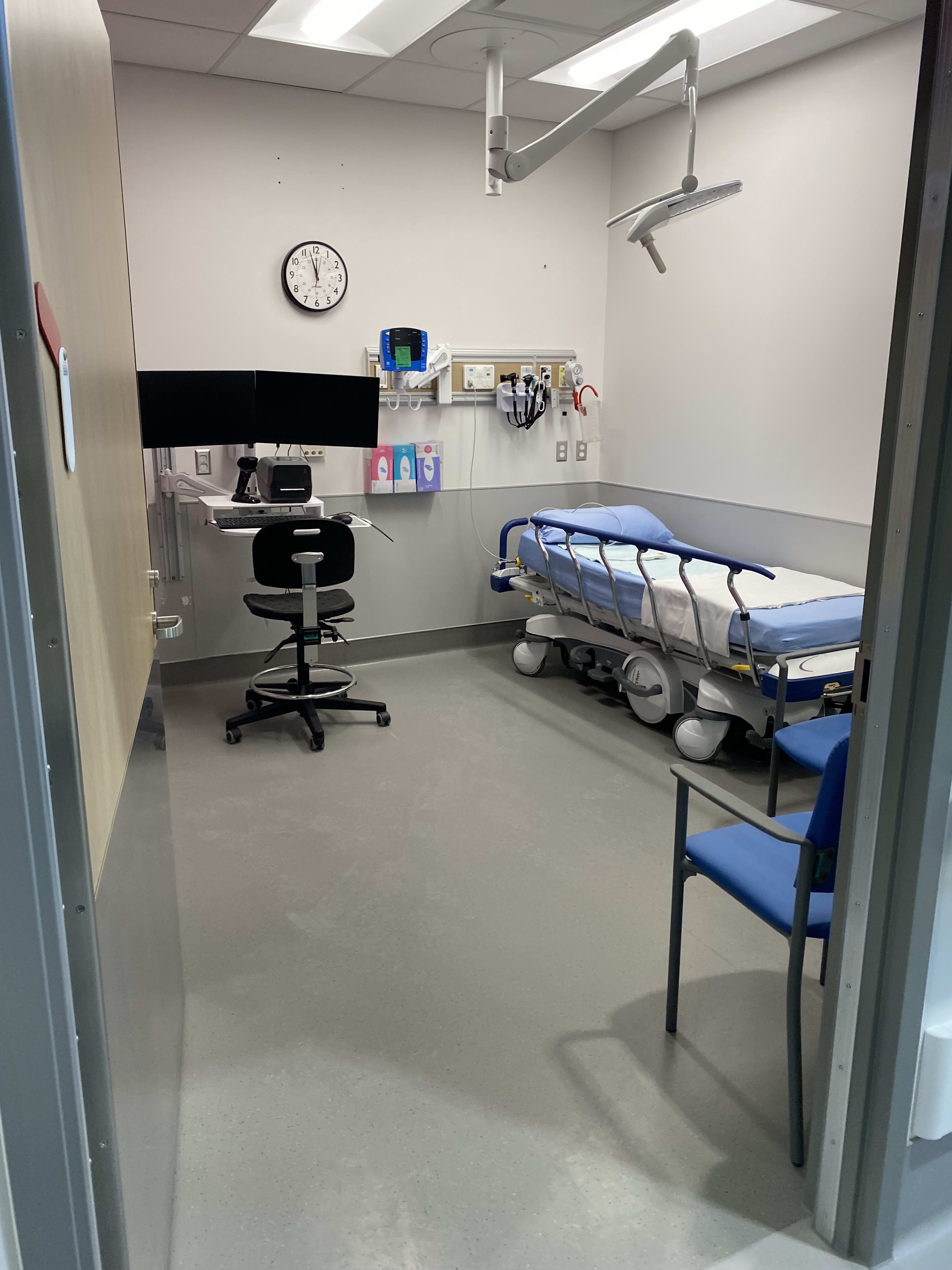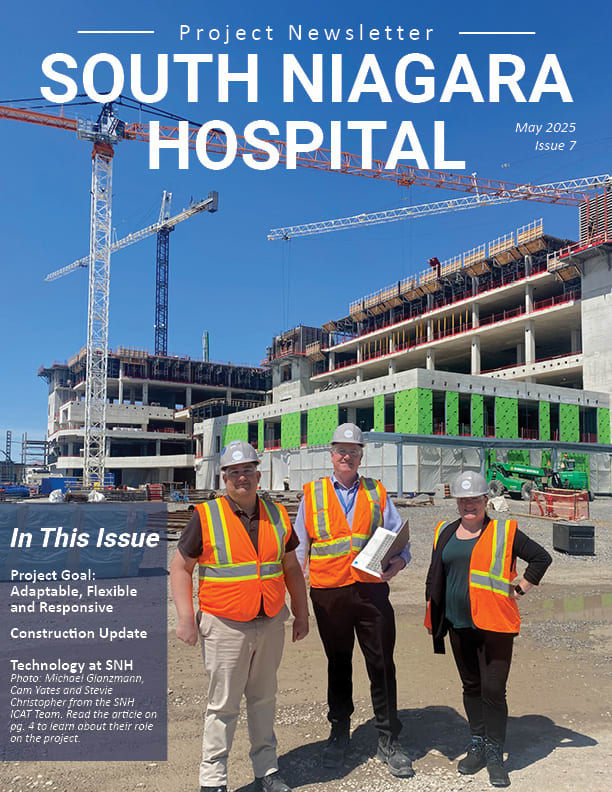We are designing the South Niagara Hospital to be adaptable, flexible, and responsive — built to meet today’s state-of-the-art healthcare needs while anticipating future demands and supporting the long-term health of Niagara’s people and environment.
Planning a hospital for the future is no simple task — especially when that future is unpredictable. While population growth trends and census projections offer some insight, unforeseen developments like technological breakthroughs or global health crises can quickly shift community needs. So, how can a hospital be prepared for what it cannot predict? The answer lies in designing a building that is adaptable, flexible and responsive. These principles form one of the six core project goals guiding the development of the South Niagara Hospital. By incorporating flexibility and planning for future changes, the hospital is being designed not just for today, but for whatever tomorrow may bring.
Uniform Space Designs
One of the ways we are making the SNH flexible is by designing generic and uniform spaces that can be used for multiple departments. For example, there will be 80 exam rooms throughout the hospital in areas such as the Emergency Department or ambulatory care spaces. Almost all of the rooms have standardized layouts so that all staff and physicians can walk into any exam room and have the tools they need in a familiar arrangement.
Another example is the Complex Care and Medical/Surgical inpatient bedrooms that have consistent layouts at multiple scales — floor, pod and room. Consistency in these spaces will support the ability to convert between care types with minimal disruption if the need arises in the future.
This principle of standardization has been applied across many different spaces in the hospital, including procedure rooms, medication rooms and more, which allows for flexibility in day-to-day operations, but also over time as the needs of the hospital change.

Examination room in the SNH high-fidelity mock-ups. Final design may change.
Flexible Workplace Strategy
In order to maximize the amount of clinical space in the building and respond to the workplace strategy that was developed through an extensive amount of user engagement, Niagara Health’s workplace environment will be changing with the South Niagara Hospital.
We will be moving away from assigned smaller office spaces, and transitioning to larger open-concept touch-down workstations. This also supports the hybrid work model that Niagara Health has adopted for many administrative positions. Based on feedback received, staff want a more fluid and flexible open workspace where collaboration can be supported. Creating open concept workspaces also means greater access to natural daylight and outdoor views, which was also identified as a priority by staff and is one of the many wellness features of the hospital. Recognizing the need to balance open spaces and privacy, workstations will have access to a variety of supports, such as breakout and meeting rooms, phone rooms and resource spaces.
By removing separations between administrative departments, the building layout also allows for future flexibility between departments as they grow or shrink.
Planning for Future Expansion
Recognizing the population in our region is likely to grow in time, the South Niagara Hospital site was planned to be able to accommodate both internal and external future expansion. The 50-acre greenfield site was mapped out in a way that will allow future growth around the building and street entrances. Areas near the Emergency Department and diagnostic imaging entrances are designed to allow external expansions to those departments with minimal impact to building access, overall design and the ongoing operations. Where departmental growth may be anticipated in time, certain spaces within the building are also designed in a way where they could be easily expanded into other departmental spaces.
Space on the site has also been identified to accommodate a potential parking garage if the need arises in the future, and even space for a total hospital redevelopment or ancillary building on the northeast corner of the site.
Pandemic and Disaster Planning
Thoughtful consideration was given to pandemic, outbreak and disaster planning, which often puts an increased demand on hospital resources. Features such as decontamination areas, double door vestibules that can create negative pressure or anterooms, and segregated traffic routes are some examples of pandemic planning that have been incorporated in the building.
As part of disaster management planning, consideration was given for a potential CBRNE incident - an emergency involving chemical, biological, radiological or nuclear materials, possibly combined with explosives - the site layout has incorporated space for a CBRNE containment zone.
Technology and Innovation
Technology plays a major role in this project, and touches almost all aspects of building operations in support of healthcare services. One of the challenges, however, is that technology is evolving at a rapid pace. While we can’t predict what the future will bring, as much as possible we have built flexibility into the project by incorporating infrastructure to support emerging innovations.
The South Niagara Hospital will be introducing many new technologies to Niagara Health, for example the Automated Transport System (ATS) that will be used to transport supplies and materials autonomously throughout the hospital. Automated Guided Vehicles (AGV) and Autonomous Mobile Robots (AMR) will move along designated paths and dedicated elevators and will deliver materials to various locations where they will be met by staff, helping to improve workplace efficiencies.


